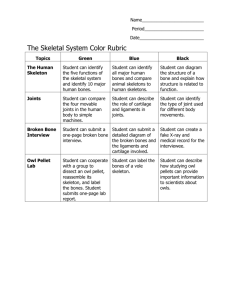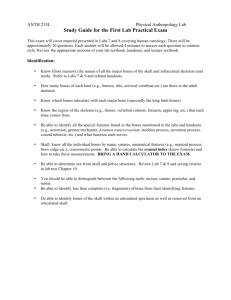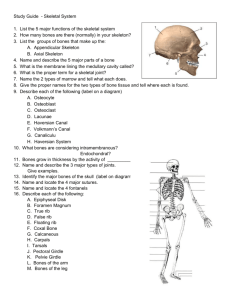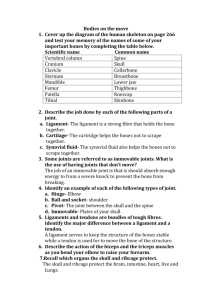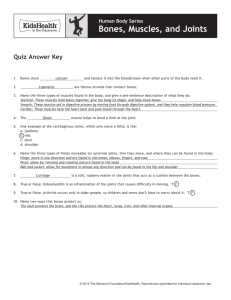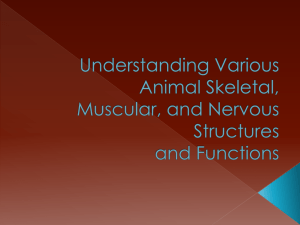Skeletal System Terminology
advertisement
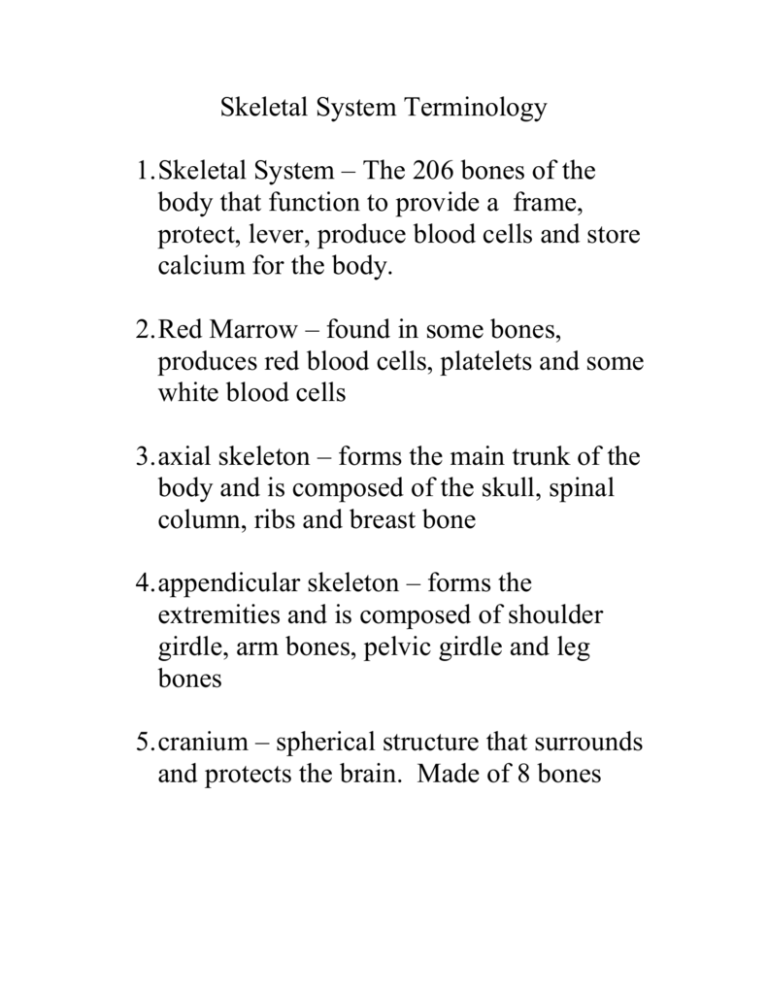
Skeletal System Terminology 1. Skeletal System – The 206 bones of the body that function to provide a frame, protect, lever, produce blood cells and store calcium for the body. 2. Red Marrow – found in some bones, produces red blood cells, platelets and some white blood cells 3. axial skeleton – forms the main trunk of the body and is composed of the skull, spinal column, ribs and breast bone 4. appendicular skeleton – forms the extremities and is composed of shoulder girdle, arm bones, pelvic girdle and leg bones 5. cranium – spherical structure that surrounds and protects the brain. Made of 8 bones 6. fontanels – “soft spots” allow for enlargement of the skull as brain growth occurs 7. Sutures – areas where the cranial bones have joined together 8. Sinuses – air spaces in the bones of the skull that act as resonating chambers for the voice. 9. joints= areas where two or more bones join together 10.ligaments = help hold long bones together at joints 11.Arthritis – inflammation of the joints 12.Bursitis – inflammation of the bursae, small, fluid filled sacs surrounding the joints 13.Fracture – a crack or break in a bone 14.Dislocation – when a bone is forcibly displaced from a joint 15.Sprain – when a twisting action tears the ligaments at a joint 16.Osteomyelitis – bone inflammation usually caused by a pathogenic organism 17.Osteoporosis – increased porosity or softening of the bones, it is a metabolic disorder caused by a hormone deficiency 18.Scoliosis – is a side to side, or lateral, curvature of the spine 19.Lordosis – “sway back”, an abnormal inward curvature of the lumbar region 20.Kyphosis – “hunchback” rounded bowing of the back at the thoracis area



